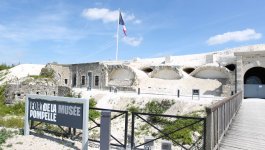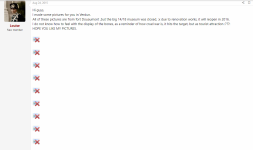JPT
Active member
Of Alsatian origin, Charles Friesé was born in Paris on October 6, 1901, son of the architect Paul-Emile Friesé (1851-1917).
Like his father, he had a brilliant career as an architect. But he was above all an inveterate collector of German imperial headdresses, emblems and weapons from 1870 to 1916
When he died in 1970, his formidable collection, which at the time numbered no fewer than 560 spiked helmets and other prestigious headdresses, was bequeathed to the city of Reims.
This collection was exhibited at the Fort de la Pompelle. This structure is one of the many forts built around Reims after 1870 as part of the fortified belt of the Séré de Rivières system. It was the key to the defense of Reims during the First World War. Despite its weaknesses and lack of artillery, the Fort de la Pompelle is the only fort in the Reims belt to have resisted the enemy.
Today, this collection is still visible in this major place of memory, presenting its rich collection in a completely renovated fort to better tell the story of the men's experience and the harshness of the fighting in Champagne.
It is worth noting that the initial presentation has been reworked since its beginnings.
I suggest you view the old presentation of (probably) the most important collection of imperial headdresses in the world.
>>> https://youtu.be/UlPyiYMeLVc

Like his father, he had a brilliant career as an architect. But he was above all an inveterate collector of German imperial headdresses, emblems and weapons from 1870 to 1916
When he died in 1970, his formidable collection, which at the time numbered no fewer than 560 spiked helmets and other prestigious headdresses, was bequeathed to the city of Reims.
This collection was exhibited at the Fort de la Pompelle. This structure is one of the many forts built around Reims after 1870 as part of the fortified belt of the Séré de Rivières system. It was the key to the defense of Reims during the First World War. Despite its weaknesses and lack of artillery, the Fort de la Pompelle is the only fort in the Reims belt to have resisted the enemy.
Today, this collection is still visible in this major place of memory, presenting its rich collection in a completely renovated fort to better tell the story of the men's experience and the harshness of the fighting in Champagne.
It is worth noting that the initial presentation has been reworked since its beginnings.
I suggest you view the old presentation of (probably) the most important collection of imperial headdresses in the world.
>>> https://youtu.be/UlPyiYMeLVc

Last edited:

